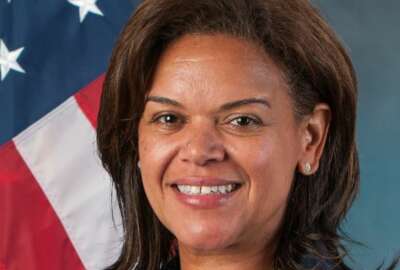

For the latest, Federal Drive with Tom Temin turned to the GAO's director of contracting and national security acquisition issues, William Russell.
Best listening experience is on Chrome, Firefox or Safari. Subscribe to Federal Drive’s daily audio interviews on Apple Podcasts or PodcastOne.
In its 13th annual look, the Government Accountability Office found that major programs of NASA tend to be late and over budget. But two programs account for most of the delays and cost overruns. For the latest, Federal Drive with Tom Temin turned to the GAO’s director of contracting and national security acquisition issues, Bill Russell.
Interview transcript:
Tom Temin: Bill, good to have you back.
Bill Russell: Nice to be here, Tom.
Tom Temin: And let’s talk about NASA. You look at it every year, and there’s about, what, seven or eight major programs that account for most of the activity at NASA.
Bill Russell: Right. This year, we actually took a look at 33 different projects. Some of those are in the early stages called formulation, where they’re still trying to figure out the exact requirements, but the rest of those 20 are actually in development. So they’re bending metal, they’re building the systems and then getting them ready for launch.
Tom Temin: And you found that for the most part nothing is really ever exactly on time according to the schedule.
Bill Russell: That’s right. Just since last year’s assessment in 2020, costs increased by about $1.1 billion over the portfolio programs. And schedule was delayed by almost three years.
Tom Temin: 37 months accumulated in these 33 systems.
Bill Russell: That’s right.
Tom Temin: Do you ever wonder why NASA just doesn’t figure out what their timeline is and then add 20%, and then they’d always be on time?
Bill Russell: It’s interesting. That’s one of the things we looked at to in this year’s review was the impact of COVID. And what we found is a number of the programs, at least for the initial impacts from the pandemic, were able to use some of their schedule and cost reserves to get through 2020. The full effects have not yet been realized. So we’re going to watch that for next year to see if there are some costs and schedule delays just from everything shutting down during the pandemic.
Tom Temin: Yeah, NASA was, I guess, forced to work as remotely as everyone else, then.
Bill Russell: That’s right.
Tom Temin: And many of these projects you say bending metal and so forth, are actually fabricating, they do a lot of fabrication in secure and in sterile, almost fab like facilities. Correct? So that’s a hard thing to do when we can’t do it remotely.
Bill Russell: Absolutely. If you think about some of these systems, they’re very complex, one of a kind. Just take the James Webb Space Telescope, which is going to be the follow on system to Hubble, that has a sun-shield that’s one of a kind, it has to get folded in a particular way and work perfectly when it launches. Or some of the systems to return to the moon under the Artemis mission. These are human rated systems that are going to be carrying astronauts, eventually to the moon. So lots of details, and they have to be done in specialized environments.
Tom Temin: And you stated in the report, most projects met the GAO best practice related to technology maturity, but few met a best practice related to demonstrating a stable design. What does that exactly mean?
Bill Russell: Well for technology maturity, we were happy to see that 10 of the 14 projects that had reached that stage in their development were using mature technologies, which basically means that they have demonstrated that they can operate in the relevant environment in which they’re intended. So that’s a good sign that they’re going to work during the launch in the later stages of development. When it comes to design stability, that’s where basically the best practices for 90% of your drawings, engineering drawings, specific details about the system to be ready to go at a key decision point. And what we found is on average, the project’s came in at about 70% of their drawings being ready. And the risk there is if you have to make a change to the design later in the acquisition process, that’s going to usually equate to an increase in costs and potentially schedule. So the more stable the design can be and at an earlier junction in the acquisition process, the better.
Tom Temin: We’re speaking with Bill Russell, director of contracting and national security acquisition issues at the Government Accountability Office. But I think the most interesting and compelling finding is that two of the 33 projects, namely the Space Telescope, the new one that is yet to launch really, it’s been in development for a long time. And also the heavy lift STS system designed to get people to the moon, I guess, eventually and Mars, those accounted for years, and many billions of dollars of overrun. Let’s talk about the James Webb telescope first. That’s about 10 years overdue, isn’t it?
Bill Russell: That’s right, I think at least seven years over their initial schedule estimates and the costs have almost doubled over that time, as well. And that had a big impact on the overall NASA acquisition portfolio. And then you mentioned the other system, Space Launch System, which is the rocket that’s going to be used to carry the astronauts back to the moon, hopefully in 2024. But just between those two systems, that accounted for 7.1 billion of the total 9.6 billion in cost growth across the entire portfolio of NASA major projects. So it did have a big impact. Those two systems also accounted for about half of the cumulative scheduled delays as well. Fortunately, James Webb Space Telescope is scheduled to launch later this year, if it can stay on schedule. And the Space Launch System too has gotten to a good base where it’s done some of its initial green run testing is what they call it, where they actually fill it with liquid oxygen and other fuel and turn it for the amount of time that it’s going to need for the launch. So those two systems are getting closer to launch, which should help going forward with the NASA portfolio.
Tom Temin: With respect to the rocket engines, I think they had some trouble the first time they tried to test fire them on a testbed. It was supposed to go eight minutes or something, but it only went 30 seconds. They had issues showing up but they seem to have gotten around those at this point.
Bill Russell: Yeah. In the spring, they were able to redo that test and it was successful. So that’s a good sign for base launch systems.
Tom Temin: And what is the issue with the telescope because that is almost a decade since they said it would be launched. And billions and billions, as you mentioned, yet this is a static thing that is put on a rocket and then goes up and turns on. I mean static in the sense I don’t think there’s too many moving parts on it. But what’s been the essential issue with that project?
Bill Russell: Some of the systems are very complex within that space telescope. If you think about the detectors, there’s an elaborate sunshield which unfurls as you’re in space, and just getting all those elements right has taken longer than expected. And obviously, the costs have increased due to that. But it’s a unique one of a kind system. If you think about the images that came from the Hubble, James Webb Space Telescope works, that’s just the next generation of being able to explore the universe. But it has come with a significant amount of scheduled delays and cost increases.
Tom Temin: And of course, behind all of these projects, especially the telescope, there is the possibility that things could go wrong in launching it into space. And then all that work would have been for not on that model, that copy. If disaster should happen with launching it, do they have sufficient blueprints and technical, I guess, learning curve knowledge that they could build a second one relatively quickly based on what it took to build the first one?
Bill Russell: We recently reported on just the James Webb Space Telescope. And that effort will entail a number of risks to get through the launch, right, a lot of has to go right for the launch. And then once it’s actually in orbit, in its fixed orbit, it’s going to carry a few risks too that NASA has worked to at least decrease the likelihood of those occurring, but some of them will potentially make them mission unsuccessful if they were to occur. And we did report that NASA has developed contingency plans for for some of those risks to try to minimize the impact. But going to space is hard and some of these projects are very complex and one of a kind. NASA has tried to manage those risks, but there will be some that remain even after launch for James Webb.
Tom Temin: Do you ever think that maybe they should go ahead and build a second James Webb anyway, and launch it also? And maybe for 25% of the costs on the margin of the full project, they’d have to have them.
Bill Russell: Right. That’s a good point. But I mean, if you look to the first one, that was years over schedule, and almost double the cost for billions of dollars, so there’s definitely a trade off there, and in terms of cost and efficiency to building a second one.
Tom Temin: Alright. Well, yes. Plus, you have to get congressional approval, but otherwise, these programs look like they really are coming to the point where they’ll be there, the STS and the James Webb.
Bill Russell: Absolutely.
Tom Temin: Alright. Bill Russell is director of contracting and national security acquisition issues at the Government Accountability Office. Thanks so much.
Bill Russell: Thank you Tom, great to talk to you.
Copyright © 2024 Federal News Network. All rights reserved. This website is not intended for users located within the European Economic Area.
Tom Temin is host of the Federal Drive and has been providing insight on federal technology and management issues for more than 30 years.
Follow @tteminWFED



